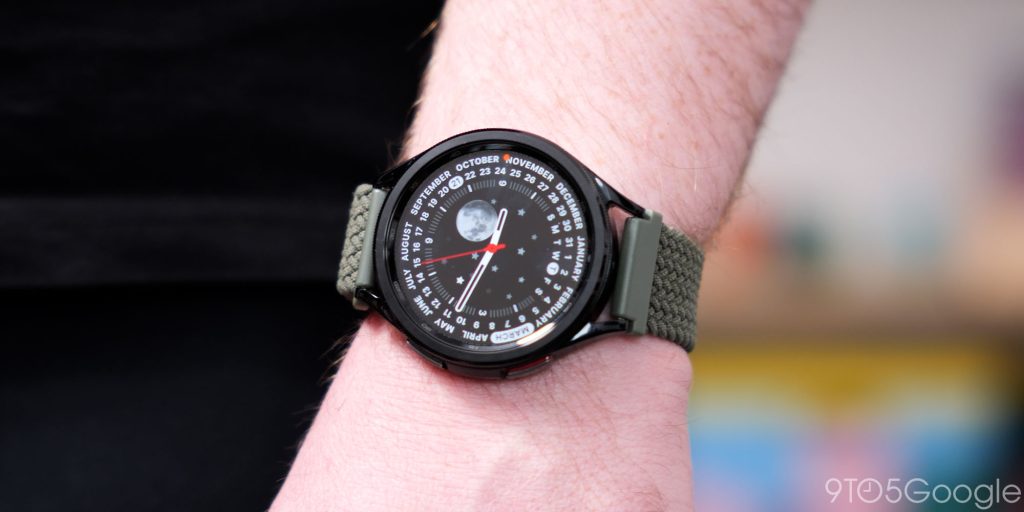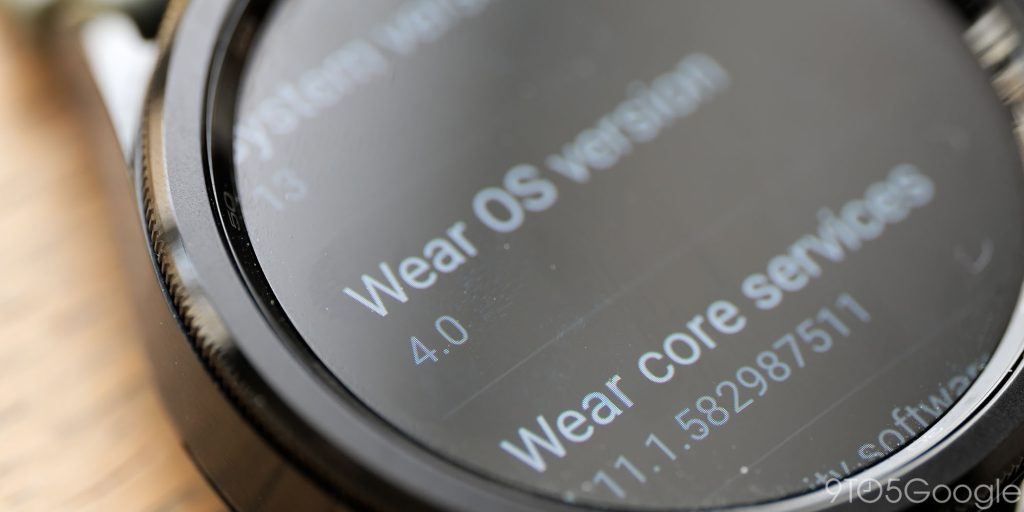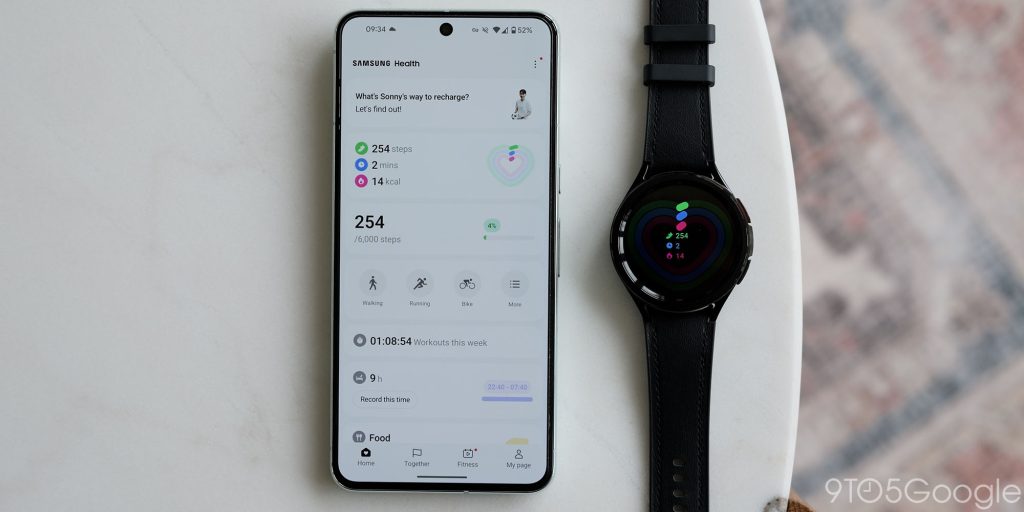
The lack of challengers to Samsung in the Wear OS market is more apparent than ever. Over half a year after its launch, the Galaxy Watch 6 Classic stands as arguably the best for Android owners despite a refreshed and upgraded Pixel Watch.
High-profile withdrawals from the Wear OS marketplace mean that your choices as a companion wearable for your Android smartphone are thin on the ground. Fossil is no longer taking part, TicWatch hasn’t launched a new wearable since May 2023, and many other Android OEMs are still in the early phases of launching their Wear OS-powered wearables.
With little real competition in the space, just how has the Galaxy Watch 6 Classic aged? Here’s everything you need to know.
Table of contents
Hardware and design
The Galaxy Watch 6 Classic is a hulking wearable in the largest 47mm variant. I think it might be a bit too big for my wrist, but I wanted to test drive this for a longer period to determine how well I would get on with the enlarged chassis.
I didn’t have the Galaxy Watch 5 Pro on hand to directly compare, but the shape reminded me of the rugged watch. I’m confident that the 43mm version is likely a better option for most people unless you have large wrists. Strong rumors exist that Samsung will switch to a square shape with the Galaxy Watch 7 series. Honestly, that could be an interesting move. While I personally prefer a circular timepiece, you can get more information on-screen with a square shape.
The rotating crown has always been a fan favorite – and rightly so. I know that many people love the rotating crown – and I do too – but if Samsung made this mechanism a little more firm it wouldn’t randomly move if you have a jacket or sweatshirt with a stiff cuff. It’s useful for whizzing through the on-screen menus, but just a tiny tweak would help prevent random watch activations.


I’m a little annoyed at how easily the screen holds dirt and smudges. Maybe the bowl-like lip of the rotating crown helps funnel dirt and grime to the display. I’m constantly cleaning grease from impressive OLED panel. So far the Sapphire Crystal glass is holding up well after six months of regular wear with no visible marks or scuffs.
Samsung’s timepiece is classy and more in keeping with traditional mechanical watches. This does mean that the design isn’t best suited to every fit. The black model makes the Watch 6 Classic easier to pair with outfits, but I think the regular Watch 6 is at home in more places and best suited for wear everywhere.
I’ve found that the size makes it a bit uncomfortable if you flex your wrist a lot. The chassis can dig into the backs of your palm, and while the edges have been softened with chamfers, it can still be slightly painful. This heavily depends on how far you place the Watch 6 on your wrist though.
The new band mechanism is great as it makes swapping out quick and easy. There’s the added bonus of compatibility with any existing straps you own. I love this move by Samsung.
Firstly, newer first-party accessories are easier to pair with your Galaxy Watch 6 Classic. Secondly, you can stick with the old lug connection method if you don’t care about the push-button release mechanism on newer bands. More companies should do this. I instantly switched to one of my favorite sub-$10 fabric bands, which has remained attached for months.
Software and performance


I have never been let down by the Watch 6 series regarding performance. Only when first booting up or at sub-10% battery levels will you encounter any sort of slowdown. This is common in the smartwatch world and is par for the course.
My personal usage is limited to being a bridge for notifications, some fairly basic workout tracking, and – most importantly – as a timepiece. The original Pixel Watch did this well, but was hampered by overly basic fitness tracking when I used it daily.
I’m glad that Google has improved lots of the firm’s first-party Wear OS apps, but it would be nice to see more developers port over more apps that I use on my Pixel 8. A dedicated Pocket Casts app would be at the top of my list for podcasts on the go without requiring my smartphone. It’s good that Google is leading the charge as this signals intent to developers that Wear OS is a good place to be. The Play Store picture is improving at a snail’s pace, but improving nonetheless.
App issues aside, the Wear OS 4 update hasn’t changed a huge amount on the Galaxy Watch 6 series. It’s not flawless, but it’s as close to it as an Android-powered smartwatch has achieved in my experience. One UI 5.0 Watch is a love-it-or-hate-it flavor. It also didn’t bring a ton of new features to the table. It is a quality-of-life update for the wearable with faster methods to add watch faces, new quick tiles, and more. The most notable in my experience is the ability to switch or transfer to a new phone without losing on-device content.
Some of the touches I love. Samsung makes it easier to navigate sections with handy hyperlinks to get where you need to be quick. I think this could be considered bad interface design, but on a small screen interactions need to be brief and this does help point you in the right direction and reduces even more scrolling and tapping.
It’s about time that Samsung should let us remove some of the pre-installed suite of apps. The app drawer is littered with Samsung alternatives and while that is fine, it creates redundancy and clutter. Plus it takes up valuable space on a watch with just 16GB of onboard storage which could be used to download offline music playlists or podcasts.
There’s still the annoying lack of functions that require a Samsung phone like the entire Health Monitor suite. It’s so frustrating that this is still a thing and it actively stops me from recommending Galaxy Watch hardware to people who want a full picture of their health. It’s not like you need the phone at all, as the on-watch hardware is doing all of the heavy lifting.
Health and fitness tracking


Samsung has stuffed the Watch 6 series with fitness tracking functions. You have more modes than you can shake a stick at. While I can’t speak for the accuracy of each individual mode, having lots of body-specific workouts is super useful.
Throw in my favorite auto-workout tracking on a smartwatch, and the Galaxy Watch 6 Classic is a great everyday companion. Google could learn from the Samsung Health suite and enhance the Fitbit experience on the Pixel Watch. Not locking historical fitness data behind a paywall is another reason I love the system.
Health Connect has also made syncing all of my stats across various apps and services that bit easier. For years, I have been using a cheap app called Health Sync to do something similar. Google’s centralized system lets me pull data into Google Fit with ease so that I can pick what app I like best to get a basic or in-depth overview of my health.
For the true fitness buff, there are vastly more accurate options out there from Coros, Garmin, and Polar. Those options lack some of the key integrations with Android to make them perfect for the average person.
Enhanced sleep tracking was touted before launch with enhanced Sleep Coaching also bundled in. I think a watch of this size is way too large to wear to bed each night. I have only tried this once since the Watch 6 series was launched. It was uncomfortable awkward, and I had worse sleep due to the added discomfort of such a large wearable.
Battery and charging

With the larger size, I had high hopes for the Galaxy Watch 6 Classic battery. Sadly, it hasn’t quite been the multiday wearable I had envisioned. At most, I can get close to 48 hours before needing to charge.
I can’t track my entire workouts to achieve anywhere close to that 2-day mark and avoid using GPS too heavily. I thought that with a larger battery, it might be able to hit two days without problems. However, it shares some similarities with the original Pixel Watch. Sometimes, the battery will take a nosedive out of nowhere and I’m looking for the charger.
I won’t fault the charging speed. Topping up is quick and, dare I say, convenient. Charging every day is nothing out of the ordinary and something I guess most Wear OS owners are accustomed to. I’d love to see a longer lifespan in upcoming hardware.
Wrap-up
The second-generation Google Pixel Watch is fine without doing much more than its predecessor. Google may be making inroads into wearables, but since Samsung returned to Wear OS there aren’t many other brands you should trust to pair with your Android phone. Timely updates, excellent hardware, and a cohesive experience make it hard to look elsewhere.
The only frustration is Samsung’s insistence on locking some fitness and health tracking functionality behind a hardware paywall. There are business reasons for this decision, but when there are so few players making moves in the Wear OS space, Samsung could cement itself as the only choice for Android fans wanting a companion wearable.
One of the major stumbling blocks for me has been the large size of the 47mm Galaxy Watch 6 Classic. It’s a beast on your wrist. The smaller 43mm version might be a better buy for anyone desperate for the rotating bezel. The Pixel Watch 2 might be a sizeable upgrade internally, but Samsung is still holding down the fort when it comes to the rest of the package.
Maybe the next wave of Wear OS 5 watches can disrupt Samsung’s sizeable lead in Android-powered smart wearables. Until then, the Watch 6 Classic could be considered the best option now it has fallen in price.
FTC: We use income earning auto affiliate links. More.



Comments